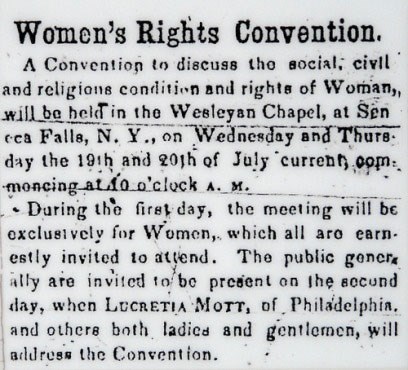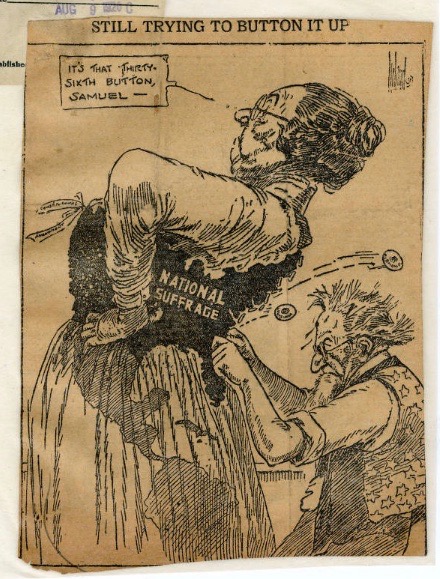Seneca Falls Convention
In 1848, five women organized the very first womens rights convention- which would mark the start of the women's suffrage movement. Martha Coffin Right and her sister Lucretia Mott, Elizabeth Cady Stanton, Jane Hunt, and Mary Ann M'Clintock came upon the idea over tea at M'Clintock's house. Nearly 300 hundred people attended the Seneca Falls Convention- a much larger crowd than expected, as only a few ads told of the event. The main event of the convention was voting on The Declaration of Sentiments, but many people also spoke at the convention.

Passing the 19th Amendment
In 1919, both houses of Congress voted for a 19th Amendment to the Constitution, which said:
"The right of citizens of the United States to vote shall not be denied or abridged by the United States or by any State on account of sex.
Congress shall have power to enforce this article by appropriate legislation."
In order for the amendment to become law, it had to be ratified by the legislatures of three-fourths of the states. Finally, on August 20, 1920, Tennesee became the 36th state to vote the amendment. It was ratified.
The 19th Amendment gave all women the right to vote, but many African American women were still kept from voting- especially in the south- with taxes, literacy tests, and threats. This continued for over forty years, until the Voting Rights Act of 1965 struck down unfair local laws.

